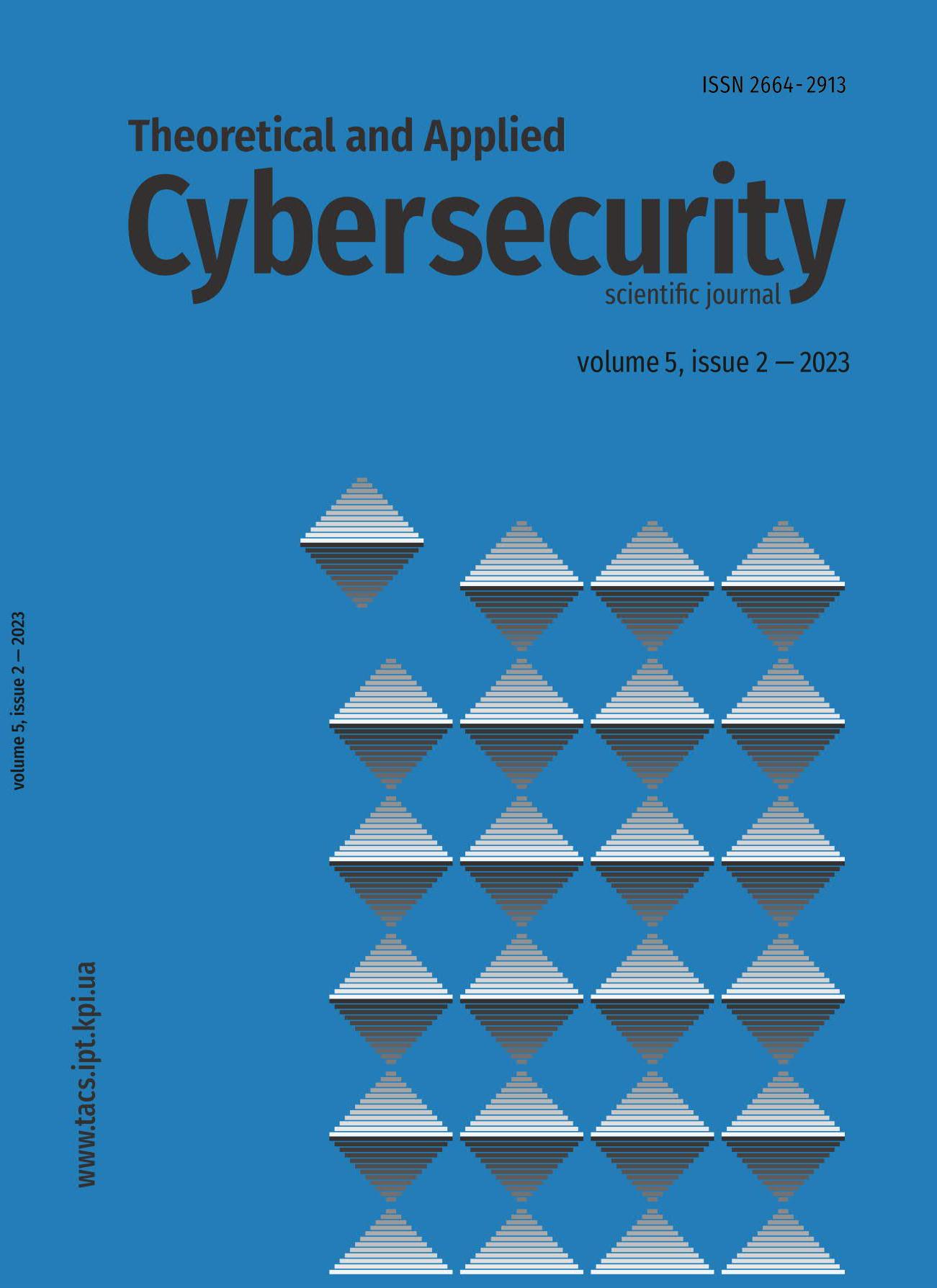The risk management of critical information infrastructure: threats-vulnerabilities-consequences
DOI:
https://doi.org/10.20535/tacs.2664-29132023.2.280377Abstract
Today, interaction between people and objects, including industrial ones, has become an integral part of our everyday life. Access to communications, finance, and all forms of information management and permission to use them can be obtained from almost anywhere using compact devices.
For example, operators can remotely control individual sectors and control operations in several areas at the same time, surgeons can operate on patients thousands of miles away, and car manufacturers can detect when one of their vehicles has been in an accident within a few seconds after the accident.
As a result of the spread of the Internet and wireless data networks, the interconnection of so much data, technology and network equipment and devices has quickly become the basis of modern society. At present, we have become a knowledge-based society that often relies on technology to execute or support almost all tasks and functions of human life. Undoubtedly, this has greatly expanded the range of tasks to be solved, but at the same time, the society became much more vulnerable to threats in information and communication systems.
The vulnerability is explained by the fact that at some point most of the production of different directions and industries is supported by the introduction, storage and search of data/information in a interconnected network of hard disks and data servers, locally or remotely located. And at each of these stages there is an opportunity to steal data, bypass protection, manipulate or replace information. But the risks associated with unintentional accidents caused by human errors, system failures, incompatibility or other unexpected problems, as well as “natural disasters,” must also be taken into account.
Therefore, the security of computer or cyber systems is a matter of national security. Actually, cyber-threats are so great that more and more security experts are pointing out that protection of cyber systems and data is more of a problem than terrorism. Given the scale of the threat (in terms of cyberattacks) and the actual damage it can be argued, certain systems and structures are at risk [1, 2]. It is proved that hackers can break into government and business websites, steal personal data, change the traffic light scheme, accelerate and slow down travel, and much more.
As an example, the implementation of a specially created malware program - Stuxnet. The effects of its use were the self-destruction in 2010 of dozens of centrifuges, which supported Iranʼs nuclear program [3, 4]. Some experts think that Stuxnet was created not by independent attackers and possibly with the support of the government. Thus, as a conclusion, it can be confirmed that hackers operate from anywhere in the world, and the links and boundaries between cyberspace and physical systems are sufficiently leveled. Thus, as a conclusion, it can be confirmed that intruders operate from anywhere in the world, and the links and borders between cyberspace and physical systems are sufficiently leveled.
Society is increasingly faced with the fact that a group or even a person armed with a complex computer virus or knowledge about the vulnerability of software or hardware can cause a lot of physical damage to people’s lives or physical destruction, impose significant social or economic damage, and so on. For example, there are facts published by the Financial times on May 8, 2012 (http://on.ft.com/1wviXHW) that an unknown group for many years is trying to penetrate into the systems of managing the networks of gas pipelines of the USA. At the end of 2014, the National Oceanic and Atmospheric Administration of the United States announced that hackers from China successfully broke and destroyed American satellite networks, causing loss of services related to the prediction of various natural cataclysms, air flight corridors, navigation and other industries within a few days (http://wapo.st/1u7N9dJ).
As a rule, the critical infrastructure includes power and transport main networks, oil and gas pipelines, sea ports, high-speed and governmental communication channels, systems of life support (water and heat supply) of mega-cities, waste management, emergency services and emergency response services, high-tech enterprises and enterprises of military-industrial complex, as well as central authorities.
The government critical information infrastructure is only one of many important systems and networks that create our modern society. Therefore, the state and society are fully dependent on the functioning of different objects and subjects of critical information infrastructure, and the loss of integrity of any of them can lead to various kinds of failures (termination of production and transfer of electricity, temporary and long-term interruptions, improper access to medical care, and much more). Each state is a separate critical information infrastructure, but cooperation between states takes place within the framework of global critical information infrastructure. At the same time, large investments in each sector of critical information infrastructure have led to an increase in economic development rates and improvement in the quality of life.
Downloads
Published
Issue
Section
License
Authors who publish with this journal agree to the following terms:
Authors retain copyright and grant the journal right of first publication with the work simultaneously licensed under a Creative Commons Attribution License that allows others to share the work with an acknowledgement of the work's authorship and initial publication in this journal.
Authors are able to enter into separate, additional contractual arrangements for the non-exclusive distribution of the journal's published version of the work (e.g., post it to an institutional repository or publish it in a book), with an acknowledgement of its initial publication in this journal.
- Authors are permitted and encouraged to post their work online (e.g., in institutional repositories or on their website) prior to and during the submission process, as it can lead to productive exchanges, as well as earlier and greater citation of published work (See The Effect of Open Access).

